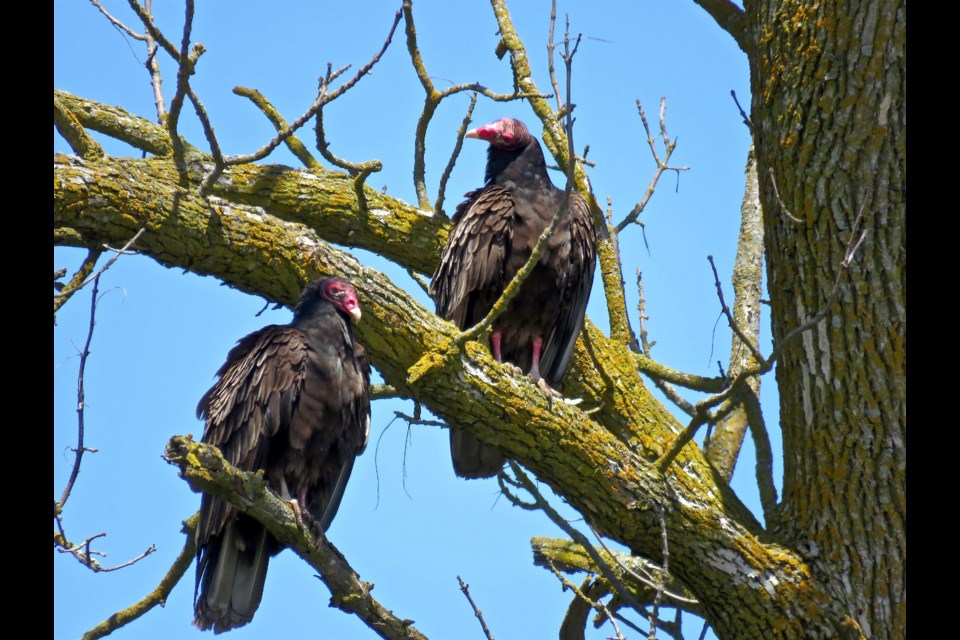Turkey Vultures lack the cute factor of say a Bluebird. They also have disgusting personal habits. They are, nevertheless, beautiful to watch floating on air thermals. They act as nature’s cleanup crew by eating roadside kill and other unpleasant incidents of dead animals.
Turkey Vultures are not typically found in backyards. Although I live on a farm property, I have only seen them once on the ground here. Recently, I was surprised to see about eight of them in some nearby dead ash trees. It was like a scene from an old western movie. Several more circled very low over my house, around the barns and silos. It was fascinating to experience.
The property owners, who live in a separate home on the farm, have chickens and were concerned. They also have cows and a calf was born in the field that morning. Turkey Vultures are considered birds of prey, yet they rarely kill for their supper. They follow their nose to the smell of rotting flesh and eat carrion. Their sense of smell is unusual in birds.
Audubon.org says a Turkey Vulture, “Occasionally feeds on decaying vegetable matter, live insects, or live fish in drying-up ponds.”
Although uncertain, it is assumed the Turkey Vultures came by here to clean up the cow’s afterbirth. In this case, none of them were rewarded for swooping in. The property owners cleaned it all up. Personally, I’d have let the vultures do it, as it's a fairly icky thing to have to do.
Speaking of icky things: As a way to cool down, Turkey Vultures defecate on their own legs thereby cooling blood vessels in their feet. Also, the acid in the urine kills bacteria on its legs.
It’s believed that in an effort to further clean themselves they stand with their wings open to bake off bacteria. This also serves to dry their wings and warm their body.
Turkey Vultures rank third in size among North American raptors behind eagles and condors. According to Canadian Raptor Conservatory, they have a wingspan of up to 173–183 cm (6ft) and an average weight of 1.4 kg (3.1 lb). They are called Turkey Vultures because they resemble wild turkeys.
They often appear black as they soar on thermals, sometimes for hours without flapping. Their grey wing tips are spread like fingers. Depending on the light, and the distance in the air, their bald red heads can also be seen.
Turkey Vultures in Ontario migrate. They aren’t fussy nesters, laying eggs on the bottom of a sheltered site such as “inside hollow trees or logs, in crevices in cliffs, under rocks, in caves, inside dense thickets, or in old buildings”, according to Audubon.org. The overall population is stable.
When you see a Turkey Vulture riding the air, thank it for its contribution to keeping nature clean, and for the aesthetics of its flight.
I share experiences of bird visitors to this property with readers every couple of weeks. Until next time, keep your eye to the sky and look for birds that may come by.
Rosaleen Egan is a freelance journalist, a storyteller, and a playwright. She blogs on her website rosiewrites.com



